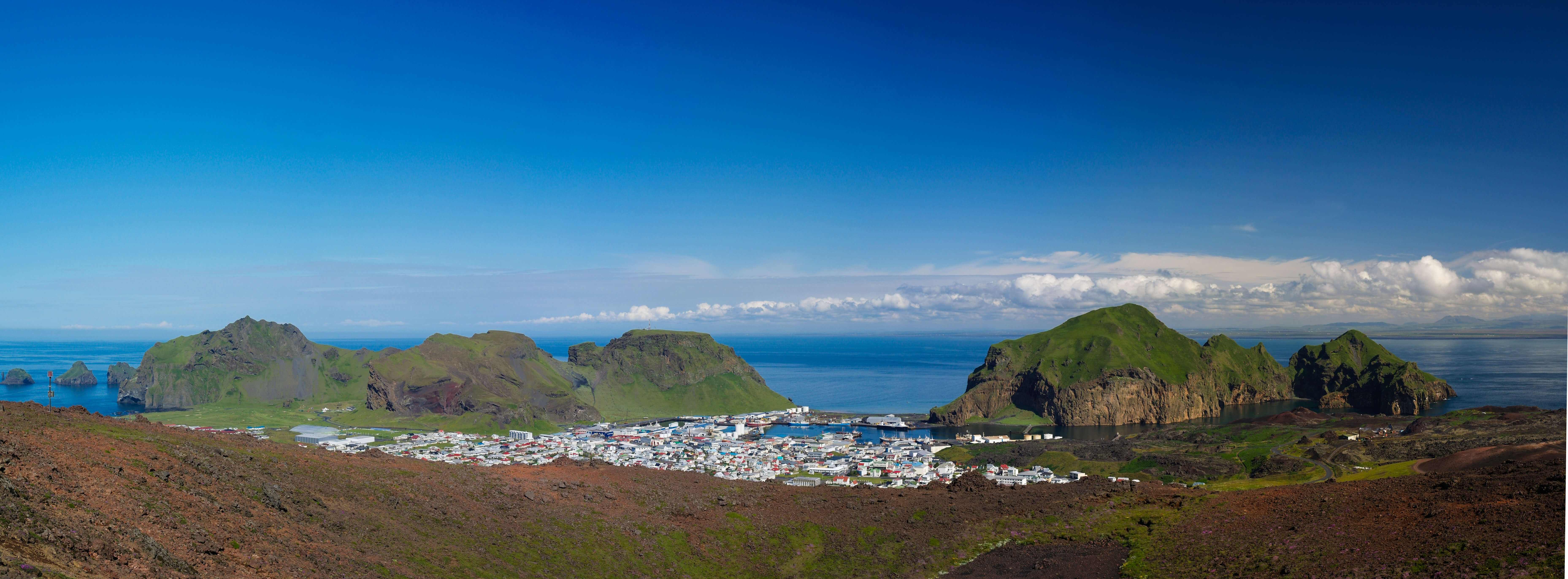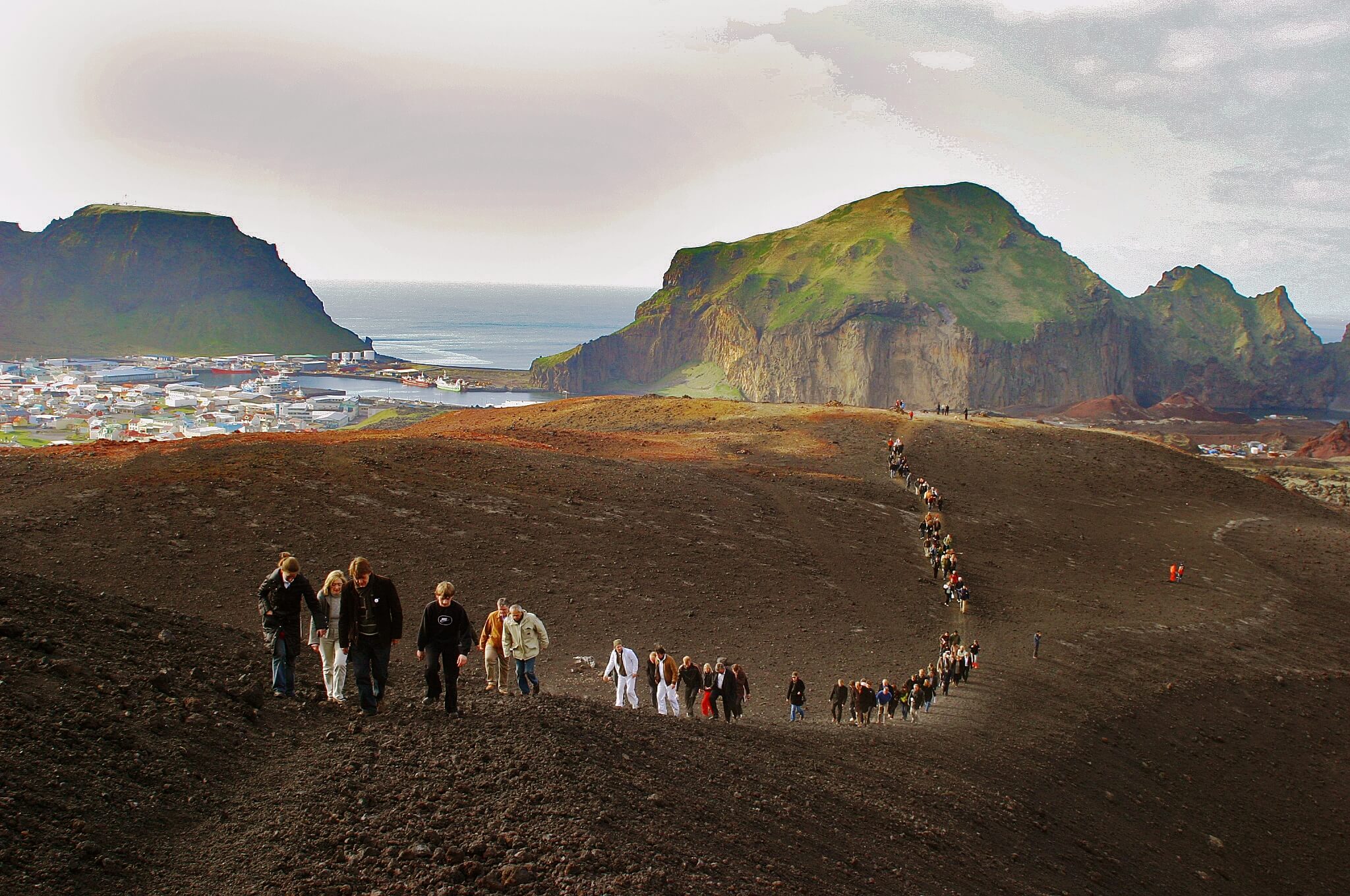May is the month where everything changes in Iceland. In a couple of weeks the landscape will turn green, puffins finally arrive back on our shores to nest, lambs are born and can finally graze in the countryside. The midnight sun is here and we can start enjoying the great outdoors. What a great feeling.
This year more than ever, May has been a crucial month for us. At the time of writing only 4 cases of Covid-19 have been reported since the start of the month, and nobody is in the hospital anymore. There are now only 6 official active cases in Iceland. Many restrictions which have been in place since February, including limits on public gatherings, are now being lifted and life is slowly returning to normal.
)
We officially reopened the office on 4th May and for now most of our staff are working in the morning four days a week. It felt great to see my colleagues again, and get some human “contact” (although the 2m rule still applies). Some still prefer the countryside and are working remotely, spending their free time helping out with our lambing season like our Operations Manager, Hildur, featured below. She will be make an appearance on our Instagram stories later this week @eskimosiceland – do give us a follow to see what she’s been getting up to!
The most positive news of all is the recent announcement that Iceland will welcome international travellers no later than 15th June. Currently, all arrivals to Iceland are subject to a two week quarantine, but between 25th May and 15th June, things are going to change significantly. Tourists visiting Iceland after this date can make one of three choices:
- be tested for coronavirus on arrival in Iceland;
- or, present a clean bill of health from the health authorities in their home countries;
- or, go into immediate two week quarantine
All visitors will also be asked to install the C-19 contagion tracing app on their smartphones.
Note that until 15th June, no one from outside of the Schengen Area will be able to enter Iceland. After that time, tourists from outside Schengen should be able to visit Iceland under the aforementioned conditions.
At the moment health authorities are establishing a process for screening international arrivals. This is what we understand so far:
- Travellers will be tested at the international terminal and then be allowed to go to their accommodation while awaiting the results, which could arrive on the same day.
- Testing expense will initially be covered by the Icelandic government, but travellers will later be asked to repay the cost.
- Another possibility for entry without quarantine is that travellers seek out a clean bill of health from their healthcare provider or a travel clinic prior to departure. If Iceland’s health officials approve the certificate, visitors can avoid both the testing on arrival and the two-week quarantine.
Further clarification around these procedures is still needed to ensure a smooth and safe journey for your clients, but also that Iceland’s efforts in flattening the Covid-19 curve is not undermined.
Nevertheless, I am delighted to finally do some positive planning as we prepare to welcome your clients back to Iceland. In the meantime, we’ll continue to offer Icelandic inspiration via our blog and Instagram. This month, we’re exploring the magnificent Westman Islands, one of our favourite summer getaways.
Stay safe.
Jean
Where:
The Westman Islands (known as Vestmannaeyjar here in Iceland) is a volcanic archipelago easily accessed from the south coast. They’re among the youngest islands in the world: Surtsey, for example, was only formed by an eruption in 1963. The ferry journey to the main island, Heimaey (Home Island), takes just 30 minutes and it is also possible to take a short flight from downtown Reykjavík.
When:
Heimaey is open year round, but summer is better to enjoy more reliable weather, a smoother ferry ride – and lots of puffins!
Why:
Despite being a stone’s throw from Iceland’s most visited attractions on the south coast, comparatively few tourists will venture over to the Westman Islands. It offers a striking scenic contrast from the mainland, with sheer, grass-topped cliffs that tower above the ocean, craggy lava fields and spill into the town and Eldfell, a huge rust-red volcanic crater, dominates the landscape. Birdlife is abound – it is one of the best places in Iceland to see puffins – and culturally it’s a little different, as Westman Islanders have cultivated their own proud traditions.
Where to go:
Between April and August, most visitors head straight to Stórhöfði: the southernmost point on Heimaey and claimed to be the windiest place in Europe. Here, thousands of puffins come to nest each summer, and they can be observed from the large hide that has been set up on the cape. Back in the main town, there is plenty to see and do. The excellent Eldheimar Museum documents the famous eruption in 1973, which saw the whole island evacuated for several months, and explores the lasting impact it had on this close-knit community. A new Sealife Sanctuary has also recently opened, home to several rescued puffins and two cute beluga whales, who live in the nearby bay.
)
What to eat:
For a such a small community, the array of first-class dining options comes as a surprise. The island’s most celebrated restaurant, Slippurinn, is housed in an old machinery workshop by the harbour and has been nominated as one of Iceland’s best, serving locally sourced, delectable dishes. Advanced reservations are recommended!
What to do:
There are plenty of ways to enhance a visit to the islands. One of our favourites is the one hour ATV tour drives along the beach, across rugged lava fields and up into Eldfell’s volcanic crater, taking in magnificent coastal views throughout. It’s also possible to join locals in the summer and rescue baby puffins, who can get lost when they fledge their nests. Armed with a cardboard box and a torch, you’ll bring them to the Puffin Rescue Centre, who will care for them until it is time to release them back into the wild. Hiking is also a popular activity – on a clear day those who climb to the top of Eldfell will be rewarded with incredible views of the surrounding islands, and sprawling ice-capped volcanoes that are visible on the mainland across the water.
Where to stay:
The Westman Islands can easily be visited on a day trip from Reykjavík or hotels in the south coast area, but Hótel Vestmannaeyjar is an option for those who choose to stay longer. This simple hotel is located in the heart of Heimaey town within touching distance of the harbour, shops and restaurants. There are also plans to convert one of the island’s lighthouses into a boutique guesthouse…watch this space!
)